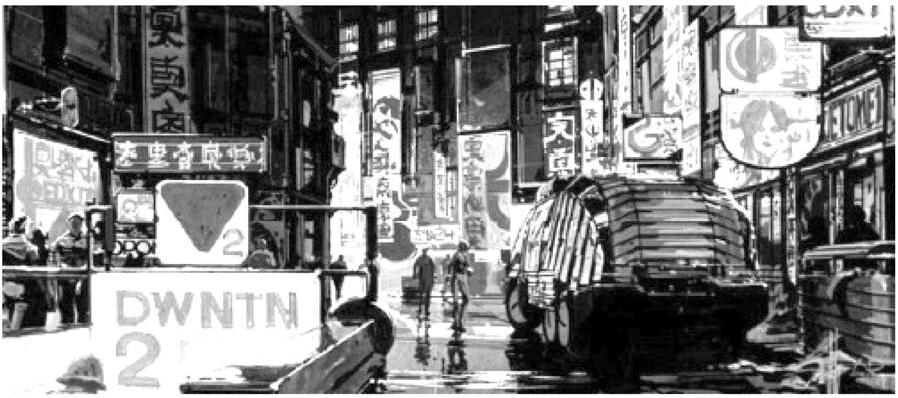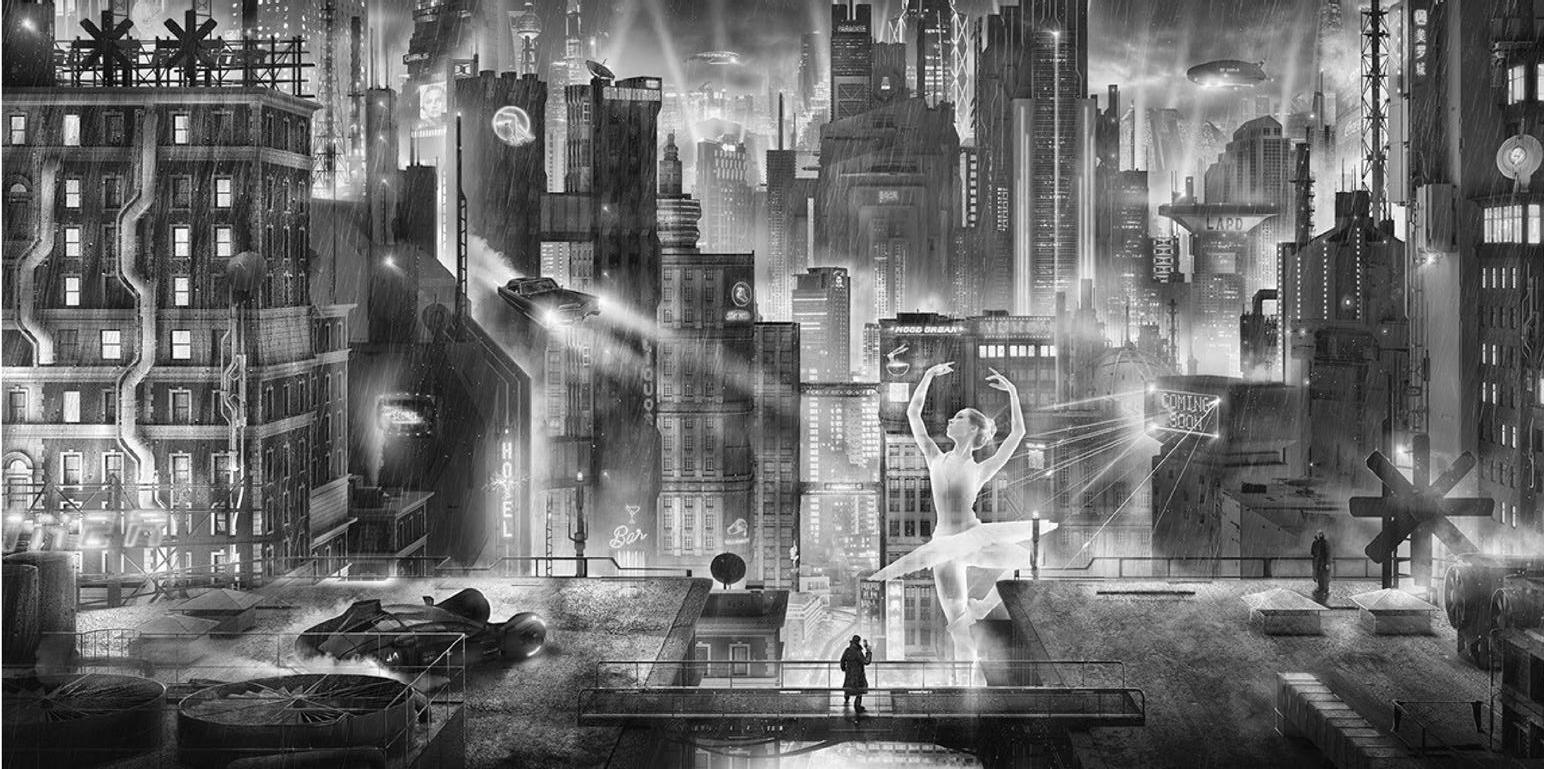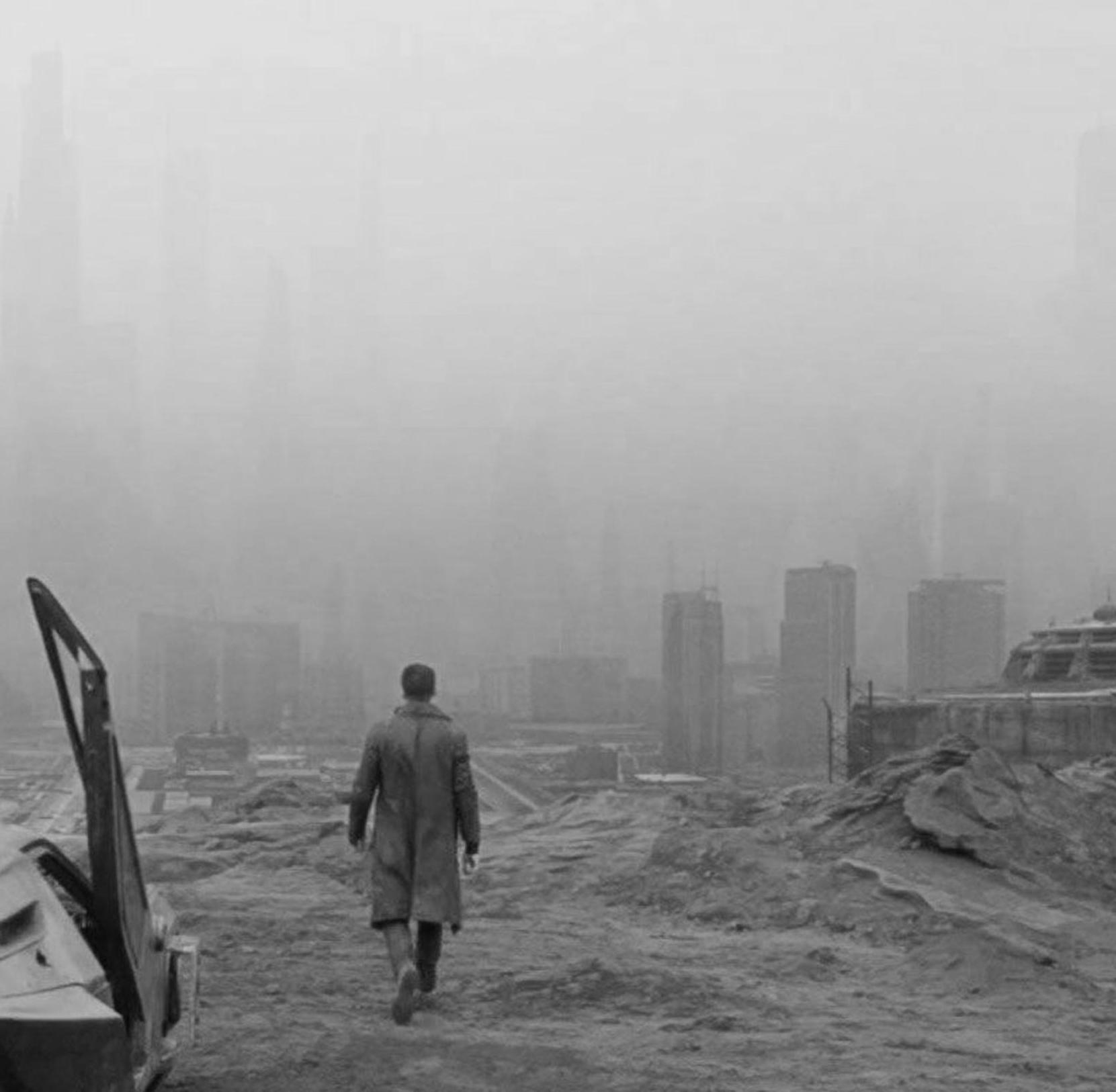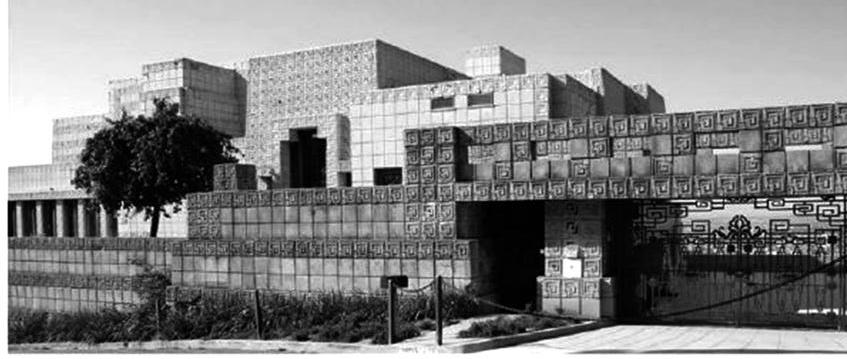
5 minute read
Narrative Serving World
from KEYSTONE 1920

Parag Kashyap V B.Arch paragkashyap2212@gmail.com
Advertisement
Ridley Scott’s 1982 movie ‘Blade Runner’ was a science-fiction masterpiece in terms of visual storytelling and world-building. The movie was placed in the dystopian Earth in the year 2019 and it was a depiction of what 2019 would look like by neo-futurist Syd Mead under the direction of Ridley Scott. It imagined skyscrapers to be inhumanly tall and polluted air deep seated in the streets of a futuristic Los Angeles that does not see the light of day and realizes the importance of their ecology only now, keeping the remaining living animals as prized pets and over-cloned animals treated as inferiors to the natural creation of God. The same is done for Replicants (synthetic humans with paraphysical capabilities to serve a purpose to the natural humans in this post-apocalyptic world) and the movie revolves around the hunt to kill the Replicants that have survived the Great War. Throughout the movie, they are escaping the hitman that is behind their lives and also try to plead to their creator, Eldon Tyrell to extend their lifespan, which is originally a meagre four years. The movie ends with them struggling to live till their last breath with remorse of losing their memories and experiences and whether those accounted for anything in their lives. The central theme of the movie is the discussion of what it means to be human to these clones and the value of emotions and memories, if you aren’t one. This is explored by making the Replicants more emotionally driven in the movies than the humans in their realization of life and their struggle to continue living. Emotions and life is valued in this movie, in a world that feels highly manufactured and artificial. Luxury is used to survive in a clean, lavish lifestyle ignoring the different environmental issues the world faces and resenting the need to rectify them in a meaningful manner and the poor are left in their cluttered streets with garbage everywhere suffering due to hunger, poverty, pollution with the urban landscapes flooded in hoardings and advertisements by huge corporations, in every direction you looked, creating its own identity and unique skyline that was context specific to Blade Runner.



The discussion is taken towards the emergence of architecture in science fiction and the style of architecture in the movie. The future of Blade Runner is shown to have retrofitted, industrial surroundings which was a groundbreaking insight in sciencefiction since it showed a reflection in the future we are slowly moving towards and the horrors it holds. Ridley Scott attempted at providing a setting that fit in the “tangible future” rather than an obscure interpretation.
The decaying dystopian setting of Los Angeles set forty years in the future depicted a grounded reality which is described as rising to cult status, covered in smog with its building reaching for the skies and its streets densely populated. The city encompassing itself in its central two gigantic pyramidal structures owned by the major genetic engineering industry, Tyrell Corporation.
Blade Runner uses the architectural heritage of Los Angeles to portray their dystopian world by taking famous landmarks used in popular culture that still today influence film such as Bradbury building, Frank Lloyd Wright’s Ennis House, Robin Hood Gardens and Unite d’ Habitation. These examples of real structures are used for comparing its references, functions and influences in the film. Using these iconic, landmark buildings as references, Ridley Scott maintained and developed a richly layered cinematic experience still relevant today. Genetic designer JF Sebastian lives alone in an empty Bradbury Building, his apartment alluding to Rybcyznski’s 17th century “bourgeois”, in contrast to Tyrell’s “aristocrat” castle. Sebastian alternates between socializing with the lower classes on the streets and his superior, Tyrell, his home reflecting a middle ground he represents, linking both the worlds. Spatially busy, the confines of Sebastian’s home transform the space into a social theatre, welcoming domestic life in all aspects.
The use of Bradbury Building adds to the futuristic narrative by providing rich oddness to the futuristic narrative. The Bradbury building designed by George Wyman in its Renaissance Revival Architectural style that is known for its interactive courtyards and amazing light quality internally but it is used as a dead ruin in the movie that is abandoned and used solely by a toy maker that uses his toys as his only company in the entire building. The sun didn't shine through the corridors anymore leaving great architecture to be futile in the current state of the world because it couldn’t serve its primary function of building an interactive community due to abandoning of the building and the city, as a whole. The environment created creates an almost dreamlike, distinctive quality signifying a blur between creation and death, android and human, numbness and feeling.

Ennis House

Ennis House, as its function in Blade Runner, transformed into a several hundred-story skyscraper. The puzzle which is most decipherable through architecture. The open plan design of the apartment negates any possibility for a physical boundary; they don’t exist, rooms flowing into one another without any physical privacy. An intimate exploration of the relationship between its interiors and exteriors is shown in the columns within and without, a second recurring element reminding the viewer of the ancient and classical foundations and influences still apparent in the city. The ornamentation of Ennis House provides the director a way to use the building as a secondary character, its recognizable concrete tiles that litter the walls, 16x16inches, compose a repetitive and modular sequence, with every architectural space being dominated by mechanical equipment and mainly the Mayan tile.








